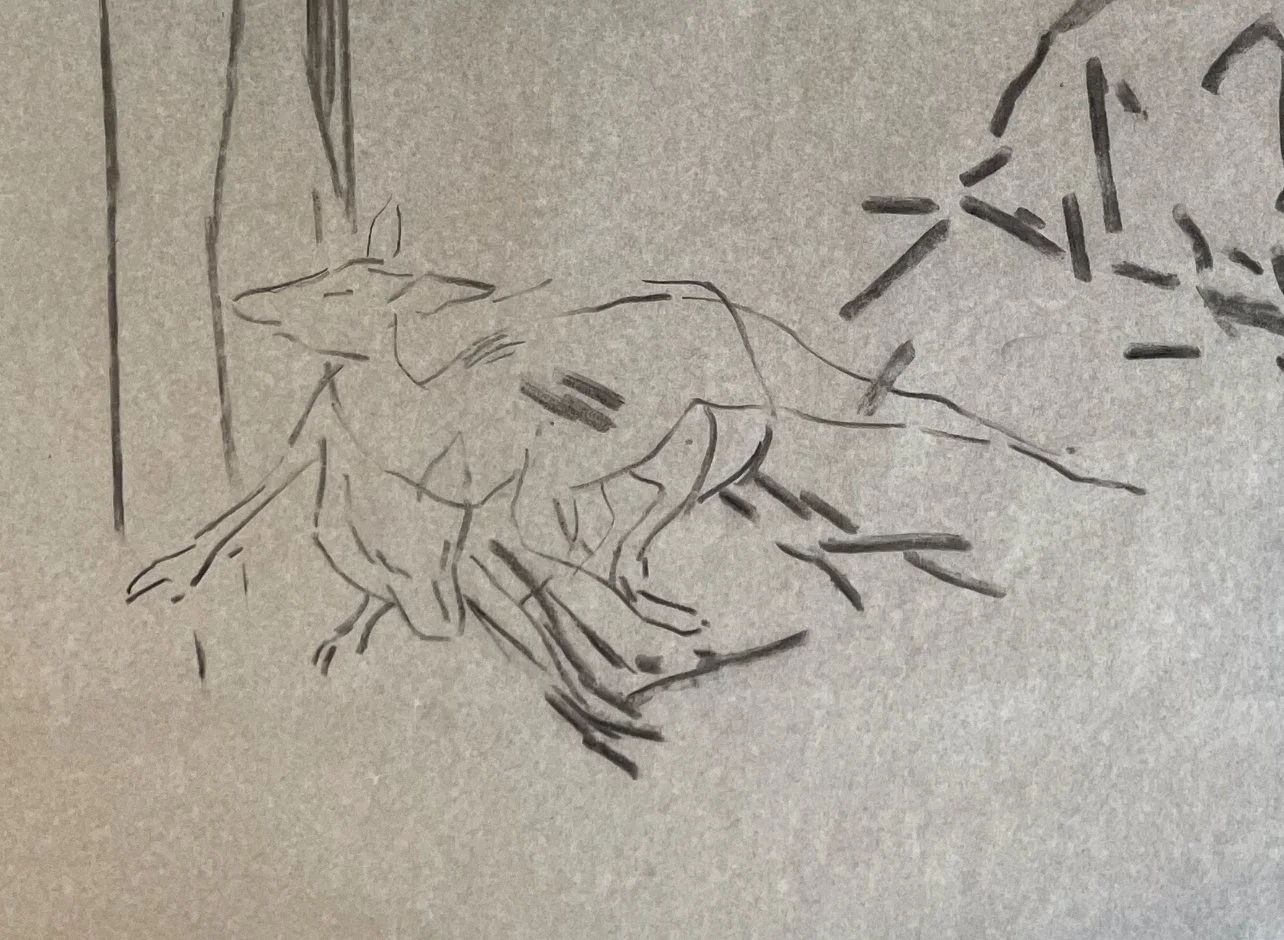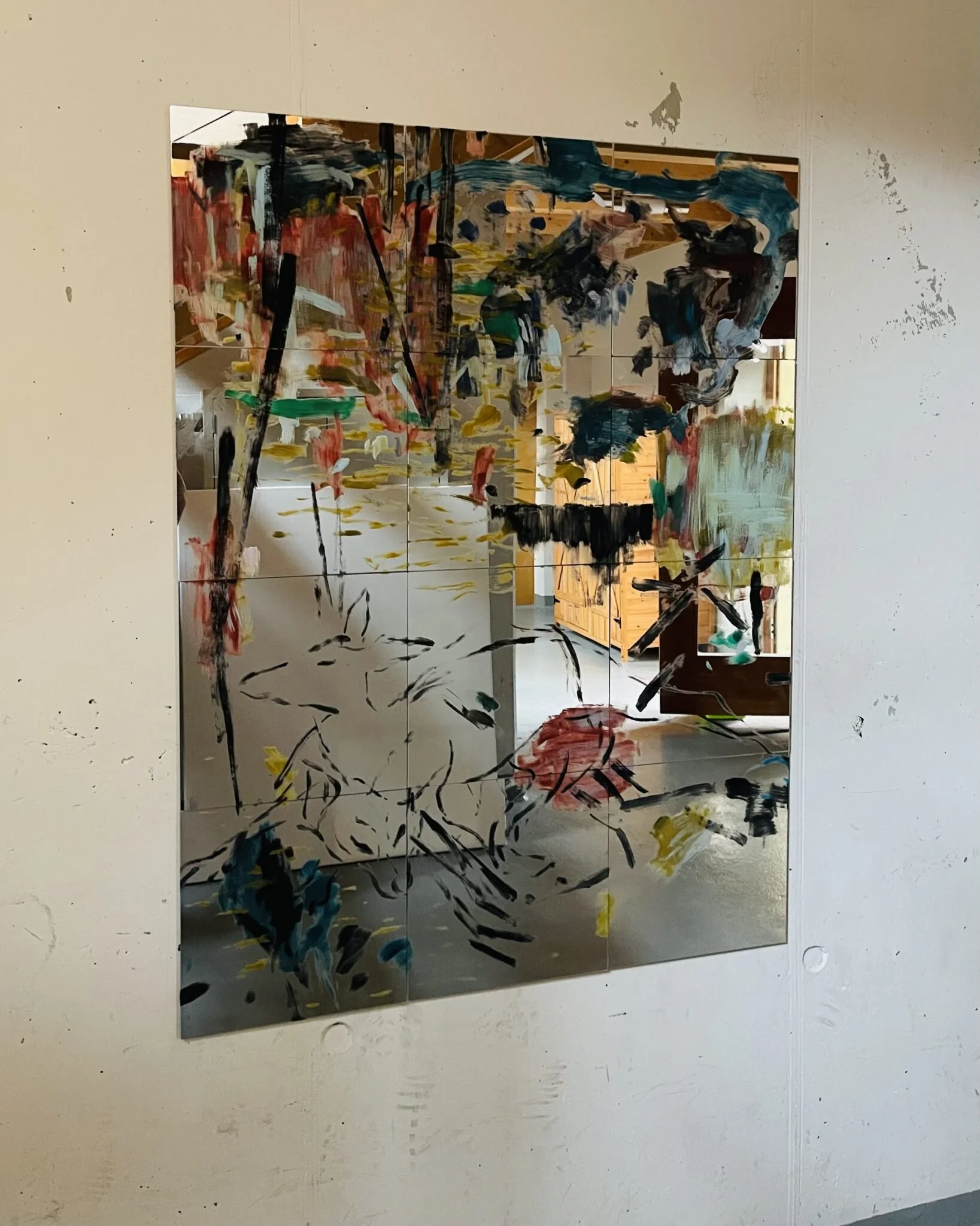Cover Image Flockhart K, Immersion (2025)
The aim of this exercise is to understand how an idea or impetus behind the work can be extended and explored through drawing. How can you bring yourself into a drawing, and explore the potential of drawing as a tool to project a voice.
I often adopt a layered process to my work. Either by mark making / erase / repeat. Or cutting into the work and layering shapes and elements to inform a future piece.
With this drawing I had 2 intentions. Using drawn line, and finding an alternative form of layering and immersion.
I looked at the work of
Nick Mauss
Helen Johnson
Julie Mehretu
Alongside this artist research I drew upon a conservation theory. Whereby the absence of wolves in the eco system dramatically changes the landscape and it’s profitability.
Without an apex predator the deer ravish the terrain. Therefor reducing food sources down the chain, and removing vital plants for the continuation of insects and pollinators.
Slowly the land becomes barren, and all the wildlife suffers. Equally it changes the nature of the actual landscape. Removing plants, removes drainage, and also alters the behaviour of the streams and rivers as their banks are depleted and essential resources die out. Animals who habitat in the waters one example being Otters, move out of the area as their environment changes and no longer supplies their needs for survival.
Certain areas in the world have reintroduced wolf packs and seen an increase of all species, healthy, thriving, and the improvement of river life and watering holes as pools and streams return to the riversides.
I wanted to represent this holistic relationship in nature.
I took 2 drawings from the first exercise, the deer laid in the grass and a sketch I made of a wolf. I laid them over each other so they appeared to be amalgamated. It expressed the 2 animals uniting in the kill, rather than one dominating the other in a brutal act.
Fig.3 Flockhart K, Sketch (2025)
The linear style of this drawing reminded me of the style of Helen Johnson and Nick Mauss. Drawn line mark making, layering, large scale. And it also seemed fitting to use the technique of working on mirrored surfaces as per Nick Mauss.
I collected 12 mirrored panels and collaged them together. And used acrylic paint to freehand the drawing onto each panel.
The loose brush work matched the texture of the grass, sticks, and fused colours. It gave a 3D effect, reminiscent of an impressionistic style.
Fig.4 Flockhart K, Immersion (2025)
Being reflected in the drawing as the one creating, photographing, and then also for the viewer, increased the meaning of all species uniting, and being immersed in the work.
Once the drawing was mounted on the wall the challenge was navigating the reflections in the mirror panels. This could also be seen as an extension to the piece. Nick Mauss uses the reflections to extend the mark marking. Mounting the panels in corners so they reflect each other, or composing the gallery space to create negative space.
Adding additional elements in the space could provide an opportunity for creating an installation as opposed to purely 2D work on the walls. Furthering the aim of immersion and layering.
I have been focusing on using the essence of drawing to inform my painting technique. Wanting to move away from controlled mark making to more spontaneous, and informally drawn marks. Letting go of control to allow a vitality into the work.
It is challenging because I work against my insecurities. Revealing a freer style that is subject to more alternative opinions because it is not relying on traditional styles to carry the exception of approval.
I am becoming more comfortable and confident manifesting this side of my practice.
List of Images
Cover Image Flockhart, K. (2025) Immersion. [Acrylic paint on mirror panels. photo edited with Hipstamatic] In possession of: The author: Volleges.
Fig.1 Johnson, H. (2017) At:https://www.helenjohnson.net/exhibitions/thenational (Accessed 01.06.2025).
Fig.2 Mauss, N. At:https://www.303gallery.com/viewing-room/nick-mauss2(Accessed 01.06.2025).
Fig.3 Flockhart, K. (2025) Sketch [Charcoal on paper] In possession of: The author: Volleges.
Fig.4 Flockhart, K. (2025) Immersion. [Acrylic paint on mirror panels] In possession of: The author: Volleges.




